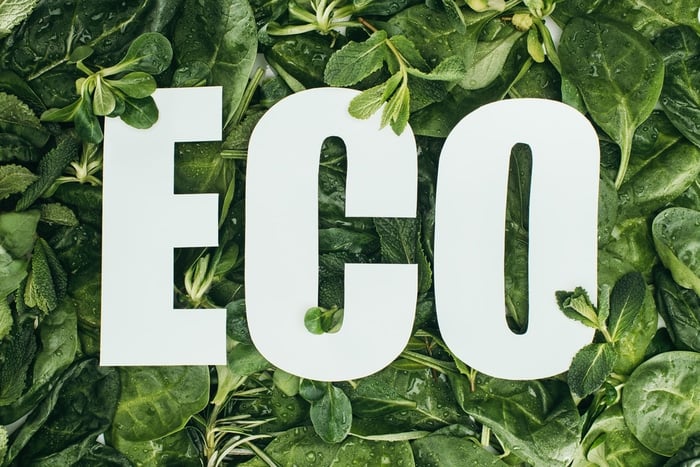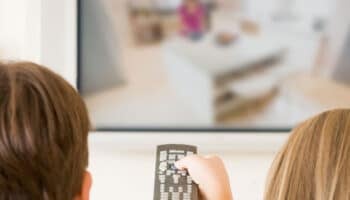We've independently reviewed this article to make sure it's as accurate as we can make it.
To find out more about our article creation and review process, check out our editorial guidelines.
Wondering how much it costs to run your TV per month?
Understanding the running costs of a TV is a common concern. With around 130 million homes in the US owning one or more TVs, it’s safe to say that most people share the same question.
On average, running a 55-inch screen for about 4 hours every day and leaving it on Standby amounts to a monthly cost of $2.46. However, the running costs will vary depending on your TV’s backlight technology, usage frequency, and the electricity rate in your area.
Read on to learn more about the running costs of your TV!
Why trust us? This article was written by Craig Anderson and Austin Sharman.
Craig has helped thousands of other homeowners repair their appliances since 2016.
TV Running Costs Calculator
How I’ve Estimated TV Running Costs
If you’re a data nerd like me, you’re probably curious about how I came up with the calculator above to know the running costs of your TV.
Well, wonder no more! I used EnergyStar data to compare different TV models.
You’ll find it hard to believe, but as it turns out, the screen resolution doesn’t significantly impact power consumption – at least not as much as screen size and lighting technology.
You see, OLED/QLED screens work quite differently from older technologies, such as regular LED/LCD or even plasma. In many cases, while their lighting components are designed more efficiently, they’re also more complex and powerful, as otherwise, they wouldn’t be able to deliver such crisp images.
However, running a TV is typically super cheap, regardless of the screen size/technology on it. And Standby modes these days are extremely energy-efficient, so you can expect to pay as little as 50 cents for that every month.
I, personally, wouldn’t worry about TV running costs, as they won’t contribute to your monthly bills as much as other elements, such as computers, Air Conditioners, or humidifiers.
How to Lower Your TV’s Running Costs
While the running costs of a TV are typically low, I understand how sometimes you want the most savings, so here are some tips to lower your device’s monthly running costs.
#1 Lower the Brightness
My first recommendation to help lower the running costs of your TV every month is to watch your favorite movies and shows on lower brightness settings.

By lowering the screen’s brightness, you can significantly decrease the power drawn, and as a nice bonus, you’ll also be extending the TV’s lifespan.
How so? Glad you asked!
Most modern TV sets are powered by small bulbs behind the screen that display the right colors and keep the screen lit. If you have the brightness set to the maximum level, you’ll wear them out sooner, and when they die, so will your TV. Either that, or you’ll have to pay for repairs.
#2 Use Eco Modes
Using the Eco Mode will also help lower your TV’s running costs.
By using Eco Mode, or Power Saver mode, your TV is designed to lower its brightness to a certain point, use fewer resources, and draw less power – all while delivering virtually the same level of performance.

Depending on the make and model of your device, there’s probably a button to enable Eco Mode on your remote, or you’ll have to mess with the TV’s internal settings in the Menu section. Whatever the case, it’s almost certain that you’ll find the Eco Mode somewhere in there.
#3 Consider EnergyStar
Energy Star-certified TVs also tend to have lower running costs.
But what exactly is Energy Star, and why is it reliable?
Well… to put it simply, Energy Star is one of the most respected energy-efficiency ratings out there. When an appliance/device is EnergyStar-rated, it means that it has been tried and tested several times and has been found to deliver great results while using as little power as possible, considering its running requirements.

Now, don’t get overly excited. While an Energy Star rating is useful and can represent some savings in your monthly utilities, it’s not magic.
In fact, most modern appliances are already very efficient, so a rating like Energy Star is just the cherry on top of the cake – that little extra mile, if you will.
#4 Choose LCD
Believe it or not, choosing an LCD screen can also help you lower your electricity bills.
I know, I know. You probably heard LCD and thought, “Isn’t that old tech?”. The answer is yes and no.
While LCD screens have been around for over a decade, they’re still used today. In fact, Samsung just revealed a 3-TV lineup with LCD technology. Yes, in 2023.

There are many differences between LCD and newer technologies like OLED, ULED, and QLED, including how they show color, how accurate the dark and light tones are, and, of course, how much power they draw.
OLED screens use more power than their LCD counterparts at peak brightness. So if you’re not willing to follow the recommendations from point #1 and want to stick to keeping the brightness up, an LCD screen will be cheaper to run.
#5 Buy a Smaller Screen
If you want to keep your electricity bills as low as possible, consider buying a smaller TV.
I know what you’re thinking. When it comes to TVs, the bigger, the better. And while I’d normally agree with you, sometimes we exaggerate our needs and go overboard.
If the area you normally watch TV in is on the smaller side, you don’t need a +65-inch TV screen, especially not if it’s a 4K display, as you can notice a lot of detail with those, even from afar.
Shopping wisely while considering your real needs will not only save you a lot of money when buying a new TV but also while using it at home. To see how much you’d save, try the calculator above and experiment with different TV sizes. In my opinion, it’s one of the best ways to weigh your options.
Who knows? Maybe owning a smaller screen will bother you more than paying a couple of extra dollars in utilities!
Wrapping Up: Understanding Your TV’s Costs
Hopefully, now you know how much it costs to run your TV.
Remember, the running costs will vary depending on different factors, such as the electricity rate in your area, the usage frequency, and your TV’s backlight technology. Don’t forget that there are many things you can do to reduce your TV’s power consumption and pay a little less in utilities each month.
Thank you very much for sticking with me all the way to the end. If this article proved useful and answered your most burning questions, please check out our other resources below and consider subscribing to our newsletter.
I wish you all the best!
— Craig.







